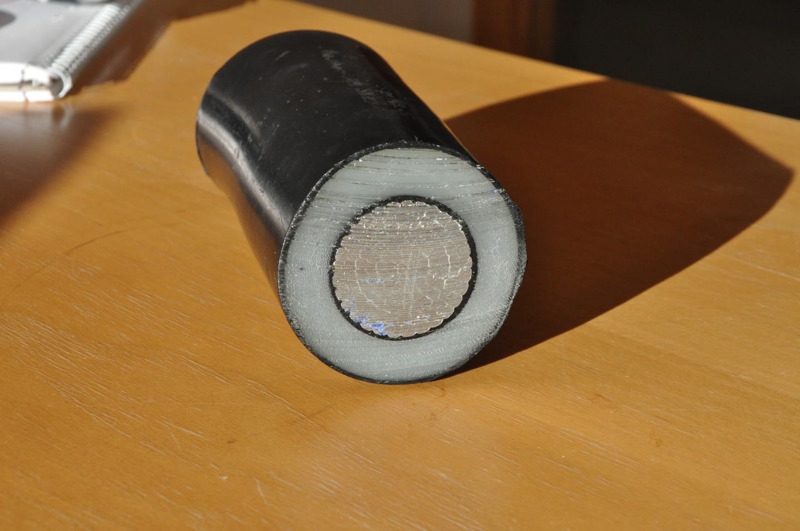
Features
Energy & Power
Transmission & Distribution
C60 nanomaterial boosts high-voltage insulation capacity
January 31, 2015 | By Anthony Capkun

January 31, 2015 – Researchers at Chalmers University of Technology have discovered that the insulation plastic used in high-voltage cables can withstand a 26% higher voltage when nanometer-sized carbon balls are added, and say this could result in efficiency gains in power grids of the future.
“Reducing energy losses during electric power transmission is one of the most important factors for the energy systems of the future,” said Chalmers researcher Christian Muller who, together with colleagues from Chalmers and the company Borealis, has found a method for reducing energy losses in alternating current cables.
Photo 1: A high-voltage cable cross-section is depicted. The electrically conductive core is covered by a black protective layer, a white insulation layer of plastic and an additional black protective layer. Photo Carolina Eek Jaworski.
The researchers have shown that different variants of the C60 carbon ball—a nanomaterial in the fullerene molecular group—provide protection against breakdown of the insulation plastic used in high-voltage cables. It is sufficient to add very small amounts of fullerene to the insulation plastic for it to withstand a voltage that is 26% higher without the material breaking down.
Photo 2: An electrical tree—a major electrical breakdown mechanism of insulation plastic. Fullerenes prevent electrical trees from forming by capturing electrons that would otherwise destroy chemical bonds in the plastic. Photo Anette Johansson and Markus Jarvid.
“Being able to increase the voltage to this extent would result in enormous efficiency gains in power transmission all over the world,” added Muller. “A major issue in the industry is how transmission efficiency can be improved without making the power cables thicker, since they are already very heavy and difficult to handle.”
The Chalmers researchers believe fullerenes are the best voltage stabilizers identified for insulation plastic thus far. The next step involves testing the method on a large scale in complete high-voltage cables for alternating current. The researchers will also test the method in high-voltage cables for direct current.
— With files from Johanna Wilde
Print this page